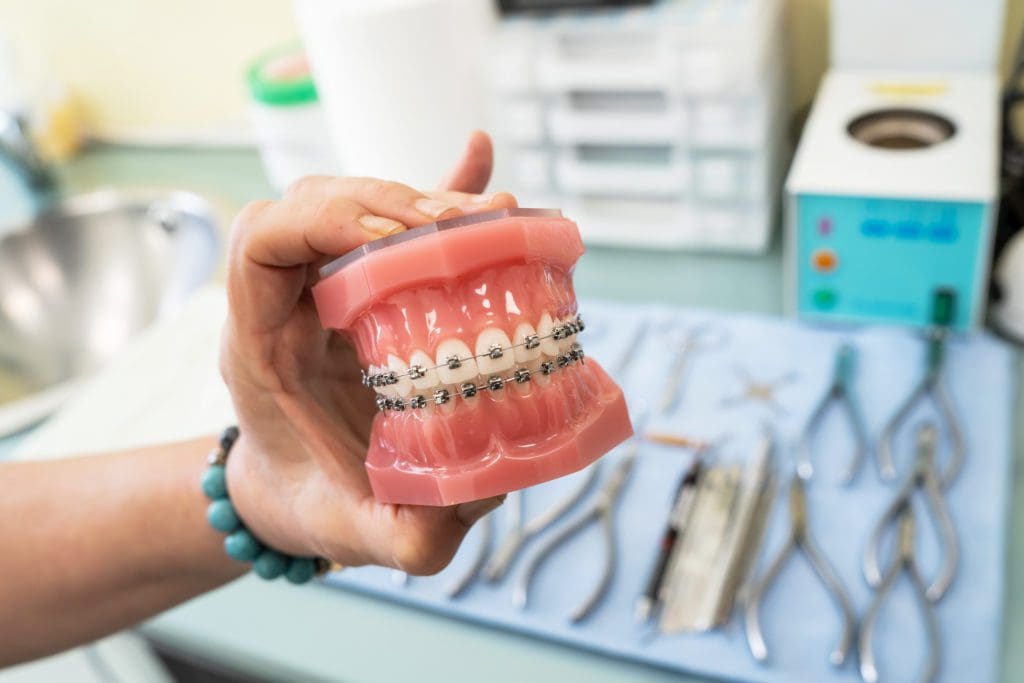Why Cumming Invisalign is the Perfect Option for a Discreet Orthodontic Remedy
Why Cumming Invisalign is the Perfect Option for a Discreet Orthodontic Remedy
Blog Article
Comprehensive Overview to Orthodontics Procedures for Fixing Dental Misalignments
In the realm of orthodontics, the trip to attaining a perfectly lined up smile entails a myriad of procedures customized to correct oral imbalances. From traditional dental braces to unnoticeable aligners and even surgical alternatives, the field of orthodontics supplies a variety of remedies to deal with differing levels of oral abnormalities. Recognizing the ins and outs of each procedure, including their mechanisms, advantages, and potential downsides, is critical in making educated decisions regarding one's orthodontic therapy. As we browse through the extensive guide to orthodontic procedures for correcting dental misalignments, the intricate information of each method will certainly unravel, dropping light on the path towards a harmonious and functional dental positioning.
Orthodontic Procedures Review

In addition to clear aligners and traditional dental braces, orthodontists may additionally suggest various other interventions like headwear, palatal expanders, or retainers to deal with certain positioning issues (orthodontist). These procedures are customized per patient's one-of-a-kind needs and may include a mix of therapies to achieve the desired results. Routine adjustments and tracking are critical parts of orthodontic therapy to make sure progress gets on track and to make any type of needed adjustments along the road. By going through orthodontic treatments, clients can not only attain a straighter grin however additionally improve their overall oral health and feature.
Conventional Braces: How They Function
When taking into consideration orthodontic therapies for dental misalignments, typical dental braces attract attention as a reliable technique for remedying teeth placing. Traditional dental braces consist of braces, cables, and bands that interact to apply continuous stress on the teeth, slowly relocating them right into the preferred alignment. The braces are affixed to the teeth making use of an unique adhesive, and the cables are threaded via the brackets. By adjusting the tension of the cables, orthodontists can regulate the direction and pressure put on each tooth, assisting them into correct positioning with time.
As pressure is applied to the teeth via the braces, the bone surrounding the teeth is reshaped to sustain the brand-new tooth settings. Patients will need routine modifications at the orthodontist's office to ensure the dental braces proceed to use the right stress for reliable teeth activity.
Invisible Aligners: Advantages And Disadvantages
These clear, tailor-made trays are essentially unseen when worn, making them an attractive alternative for people seeking a more cosmetically pleasing orthodontic therapy. Individuals can get rid of the aligners before consuming or brushing their teeth, minimizing the saturday dentist danger of food obtaining stuck in the appliance and streamlining the cleaning process.

Surgical Orthodontic Options
Surgical treatments in orthodontics existing feasible options for resolving intricate oral imbalances that might not be efficiently fixed through traditional orthodontic therapies. While undetectable aligners and conventional dental braces can correct lots of orthodontic issues, specific instances require surgical intervention to attain optimum outcomes. Surgical orthodontic choices are usually recommended for severe malocclusions, considerable jaw disparities, and instances where the underlying bone framework needs alteration to attain correct placement.
One usual medical orthodontic procedure is orthognathic surgical treatment, which involves Going Here rearranging the jaws to deal with functional issues such as problem eating or speaking. This surgery is typically executed in cooperation with an orthodontist who helps straighten the teeth before and after the treatment. Surgical orthodontics may additionally entail treatments to subject affected teeth, get rid of excess gum tissue, or improve the jawbone to produce a much more unified face account.
Before considering medical orthodontic options, people go through an extensive analysis to figure out the requirement and prospective advantages of such treatments. orthodontist. While surgery might appear daunting, it can dramatically boost both the feature and aesthetics of the smile in cases where conventional orthodontic treatments fail
Retainers and Post-Treatment Care

Failure to abide with post-treatment care guidelines can result in relapse, where the teeth gradually move back towards their initial settings. Consistent retainer wear, great dental hygiene, and regular dental check-ups are important for keeping the outcomes achieved through orthodontic surgery and making sure the lasting security of the corrected oral alignment.
Final Thought
Finally, orthodontic procedures supply numerous options for dealing with dental imbalances. Typical braces make use of metal braces and cords to change teeth into appropriate alignment. Invisible aligners provide an even more discreet option but might not be appropriate for all instances. Surgical orthodontic options are available for much more serious imbalances. Retainers are commonly used post-treatment to preserve the new alignment. Generally, orthodontic treatments can effectively boost oral health and wellness and aesthetic have a peek at these guys look.
As we browse with the extensive overview to orthodontic procedures for remedying dental imbalances, the complex details of each method will unfold, dropping light on the course toward a functional and harmonious oral positioning. - cumming aligners
One of the most usual orthodontic treatments is the usage of braces, which consist of steel braces and wires that use mild stress to progressively change teeth into the desired setting.When considering orthodontic therapies for oral misalignments, standard braces stand out as a reliable technique for dealing with teeth placing. Additionally, unnoticeable aligners might not be suitable for complex orthodontic problems that require more significant teeth motion, as they are generally advised for mild to modest instances. Retainers are custom-made orthodontic tools designed to hold teeth in their remedied placements after the conclusion of orthodontic treatment.
Report this page